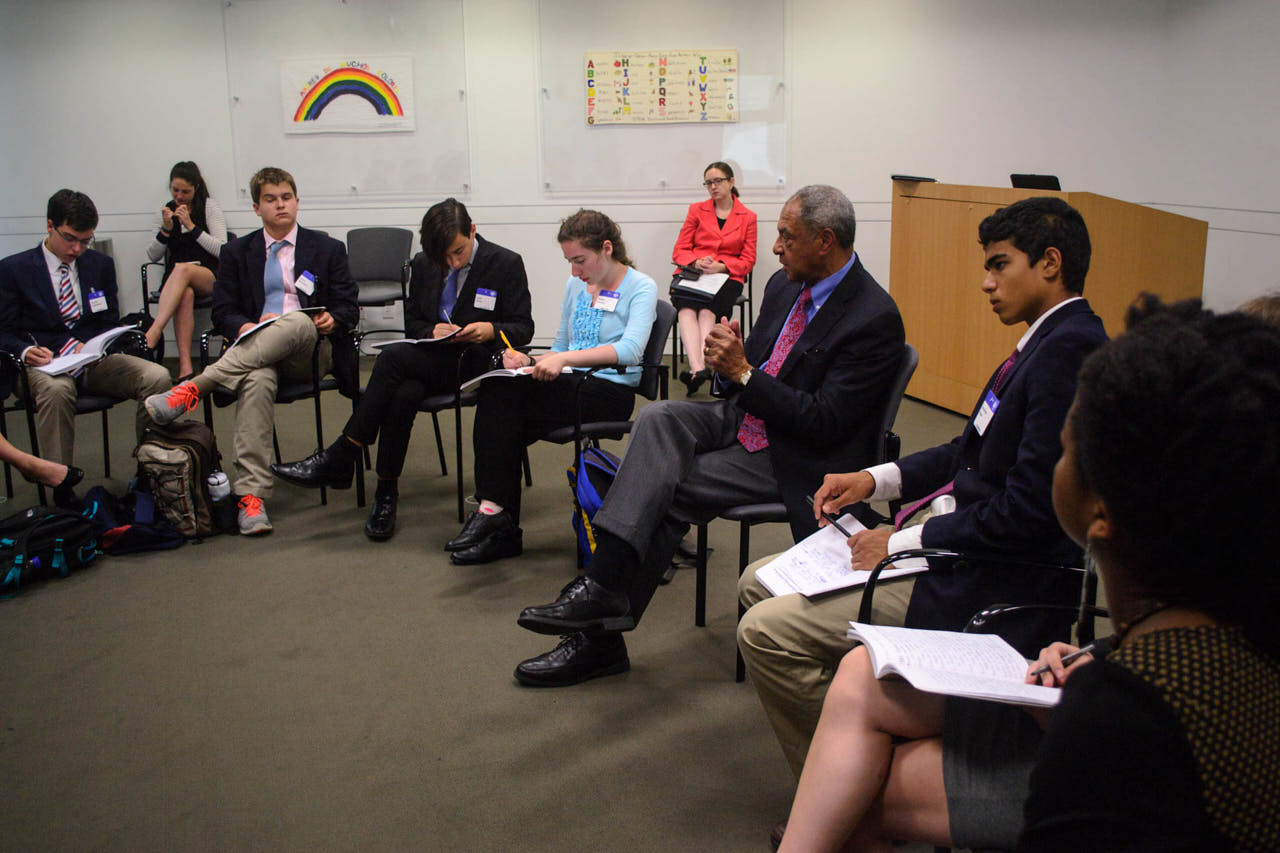Summer 2014 Confronts Rwandan Genocide
The 1994 Rwandan genocide is one of the darkest chapters in modern history. Nearly a million people were killed in 100 days while the world decided against intervening. As dark a chapter as it is, the genocide provides a remarkable learning opportunity for SEGL students. Through studying the individual and governmental responses to the violence, they can better understand effective leadership in times of crisis.
Our study began on Wednesday evening with a showing of the PBS Frontline documentary Ghosts of Rwanda. The documentary is challenging to watch and fostered an intense discussion afterward about the proper role of the U.S. government when a compelling national interest is not clearly present.
As the week progressed, we met with two leaders interviewed in the documentary. Each of these leaders provided a unique perspective that gave students a nuanced, more complex understanding of the genocide. We also benefited from a special tour of the United States Holocaust Memorial Museum, which shows the causes and effects of the world’s most notorious genocide.
On Thursday morning, we met [via videoconference] with Carl Wilkens, who has met with every SEGL class since the program’s inception. Wilkens was the only American (and one of a handful of Westerners) to stay behind during the Rwandan genocide. He saved hundreds (if not thousands) of lives because of his actions, particularly with orphanages, and after a decade as a pastor at a small Oregon boarding school started his own nonprofit to help prevent genocide. Our students found his words about humanity’s potential for good and for evil inspiring and important.
On Monday morning, we traveled to the U.S. Holocaust Memorial Museum for an exclusive tour and educational session. (Thanks to SEGL Board Member and Museum administrator Jesse Nickelson, and to Russell Garnett for arranging this special opportunity.) Alone in the museum with tour leaders before the official museum opening, the students learned about the roots and effects of the most notorious genocide in history. After the visit it was easy to draw parallels, not only with Rwanda, but with other current situations that pepper the globe with injustice. How do we recognize the roots of genocide? How do we stop it before it happens? How do we reconcile afterwards? The questions were profound and the answers not easy.
 Later
that day, we traveled to the United States Institute of Peace building,
located across the street from the State Department, to meet with
Ambassador George Moose. Ambassador Moose served as Assistant Secretary
of State for Africa during the genocide. As such, he was a key part of
the decision making that many observers have critiqued. In clear,
measured words, Moose helped our students understand the hidden
difficulties involved in making the right decision (legal arguments
about Rwandan hate radio’s freedom of speech, a slow-moving bureaucracy,
a lack of intelligence information, cautiousness after recent excursions
in Bosnia and Somalia, the 15 other international situations the U.S.
was helping to manage at the time, etc.) and also expressed his own
regrets over the missed opportunities to help. Along the way, he shared
a key ethical position: that the first obligation of governments is to
protect the life of their citizens. Would involvement in Rwanda have
violated this primary obligation? Should that be the primary obligation
of governments?
Later
that day, we traveled to the United States Institute of Peace building,
located across the street from the State Department, to meet with
Ambassador George Moose. Ambassador Moose served as Assistant Secretary
of State for Africa during the genocide. As such, he was a key part of
the decision making that many observers have critiqued. In clear,
measured words, Moose helped our students understand the hidden
difficulties involved in making the right decision (legal arguments
about Rwandan hate radio’s freedom of speech, a slow-moving bureaucracy,
a lack of intelligence information, cautiousness after recent excursions
in Bosnia and Somalia, the 15 other international situations the U.S.
was helping to manage at the time, etc.) and also expressed his own
regrets over the missed opportunities to help. Along the way, he shared
a key ethical position: that the first obligation of governments is to
protect the life of their citizens. Would involvement in Rwanda have
violated this primary obligation? Should that be the primary obligation
of governments?
The students had much to think about on the walk home.



